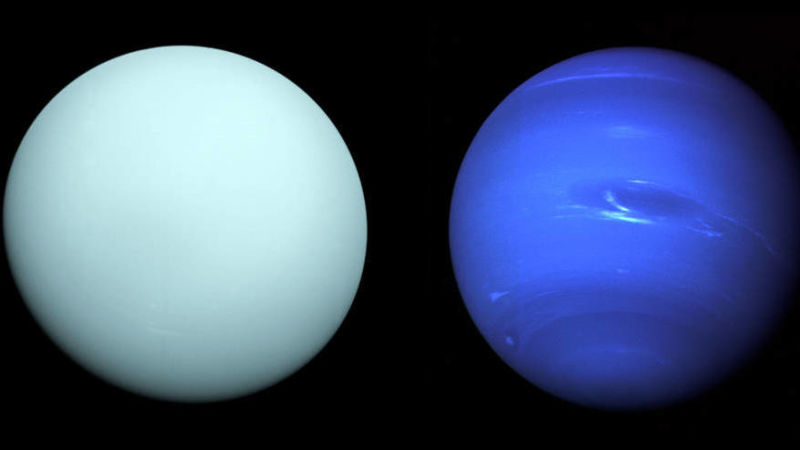If David Lynch designed a planet, it would be Uranus. Much like every episode of Twin Peaks: The Return, Uranus is fiercely unique and weirdly endearing, even though it makes no fucking sense. The planet’s spin axis is 98 degrees, so it essentially rotates on its side — and while we have some idea as to what could have caused that, no one’s really sure. That’s just how Uranus rolls, literally.
Image: NASA
New research from Georgia Institute of Technology suggests that Uranus’ unusual spin axis could be responsible for another one of the planet’s oddities. Uranus’ magnetosphere, the magnetic field that surrounds it, gets flipped on and off every day as it rotates along with the planet.
Earth’s magnetosphere is organised pretty neatly, around our planet’s North and South magnetic poles. Since Uranus is drunk, its magnetosphere is much more chaotic; tilted at a 60 degree angle to its rotational axis. Because of this, the magnetosphere is sometimes “open,” depending on its orientation, and “closed” at other times. Frankly, it sounds exhausting.

Image: NASA/JPL-Caltech
According to Carol Paty, a Georgia Tech associate professor who co-authored the study, Uranus’ magnetic field is “tumbling around” with each of the planet’s rotations. Using numerical models from Voyager 2 data, Paty and Xin Cao, a Georgia Tech Ph.D. candidate in Earth and atmospheric sciences, were able to simulate Uranus’ magnetosphere and unlock some of its mysteries — including how every day, the magnetosphere is letting in or blocking solar winds.
The team’s work has been published in the Journal of Geophysical Research: Space Physics.
“The study shows that this magnetic shield around Uranus is quite dynamic and heavily dependent upon — of all things — its rotation,” she told Gizmodo. “That’s completely different from the Earth or any of the other planets.”
Truly, we’ve only begun to scratch the surface of Uranus’ strangeness. The first (and last) time NASA visited the Ice Giant was on its Voyager 2 mission back in 1986, and that was only a five-day flyby. Just this week, however, NASA scientists submitted a proposal to revisit Uranus and its Ice Giant companion, Neptune, at some point in the next few decades.
Paty’s on board.
“We have the Kepler telescope, which is revealing thousands of planets throughout the galaxy,” she said. “It turns out statistically, the largest proportion of these exoplanets are most similar in size — and likely dynamic — in structure to Uranus and Neptune. They might provide a bit of a benchmark for understanding dynamics at all of these exoplanets.”
Stay weird, Uranus. We wouldn’t have you any other way.
